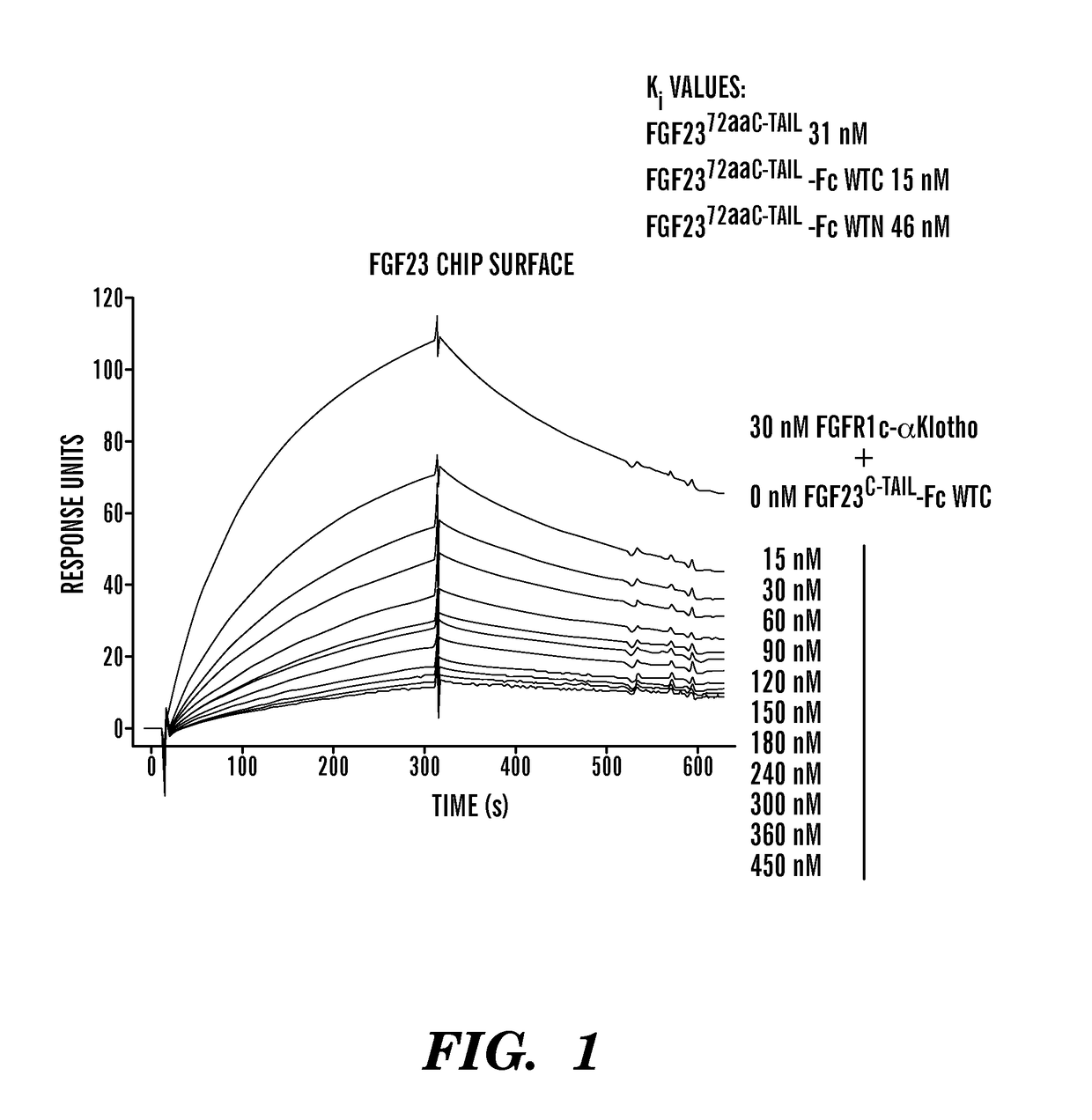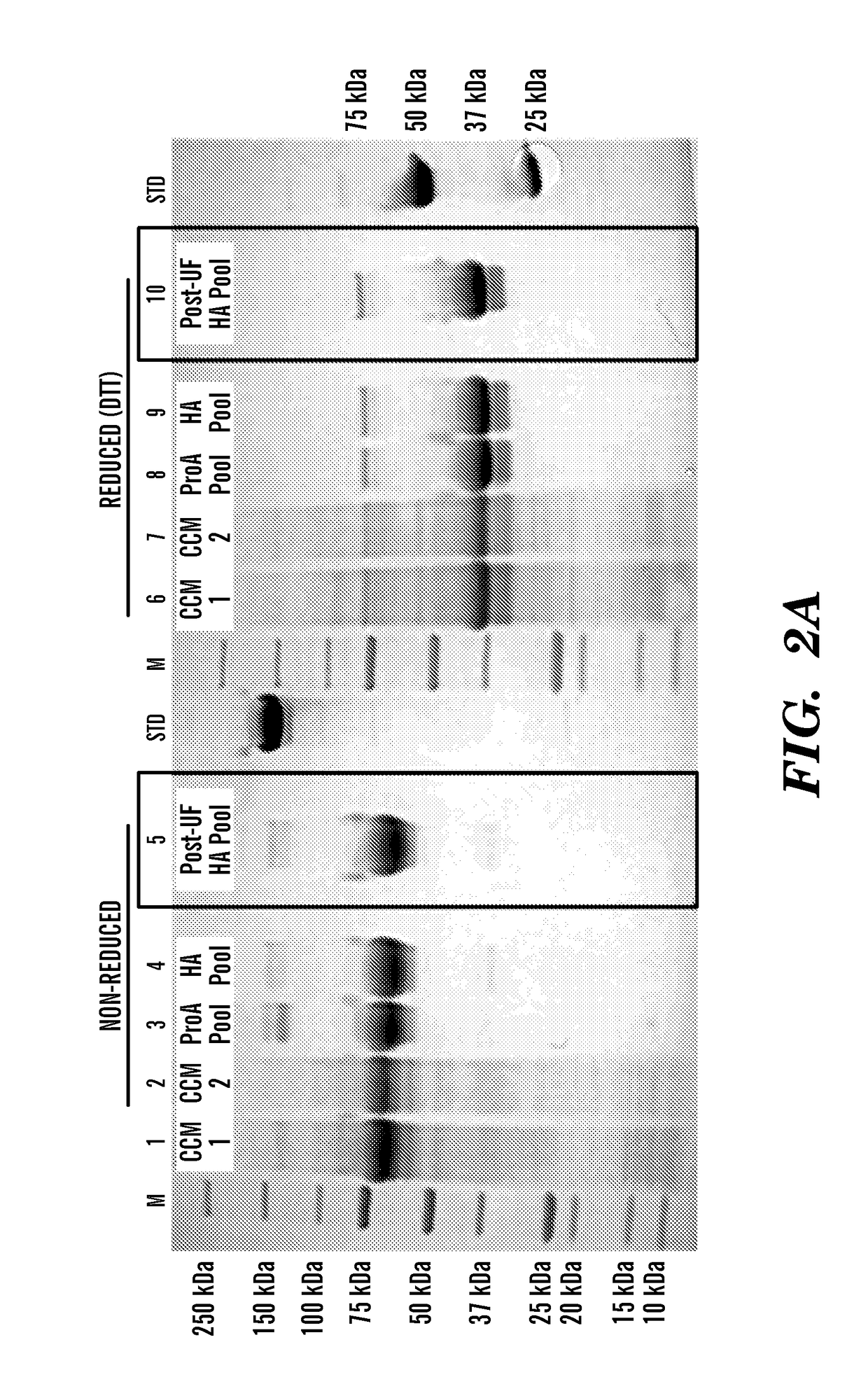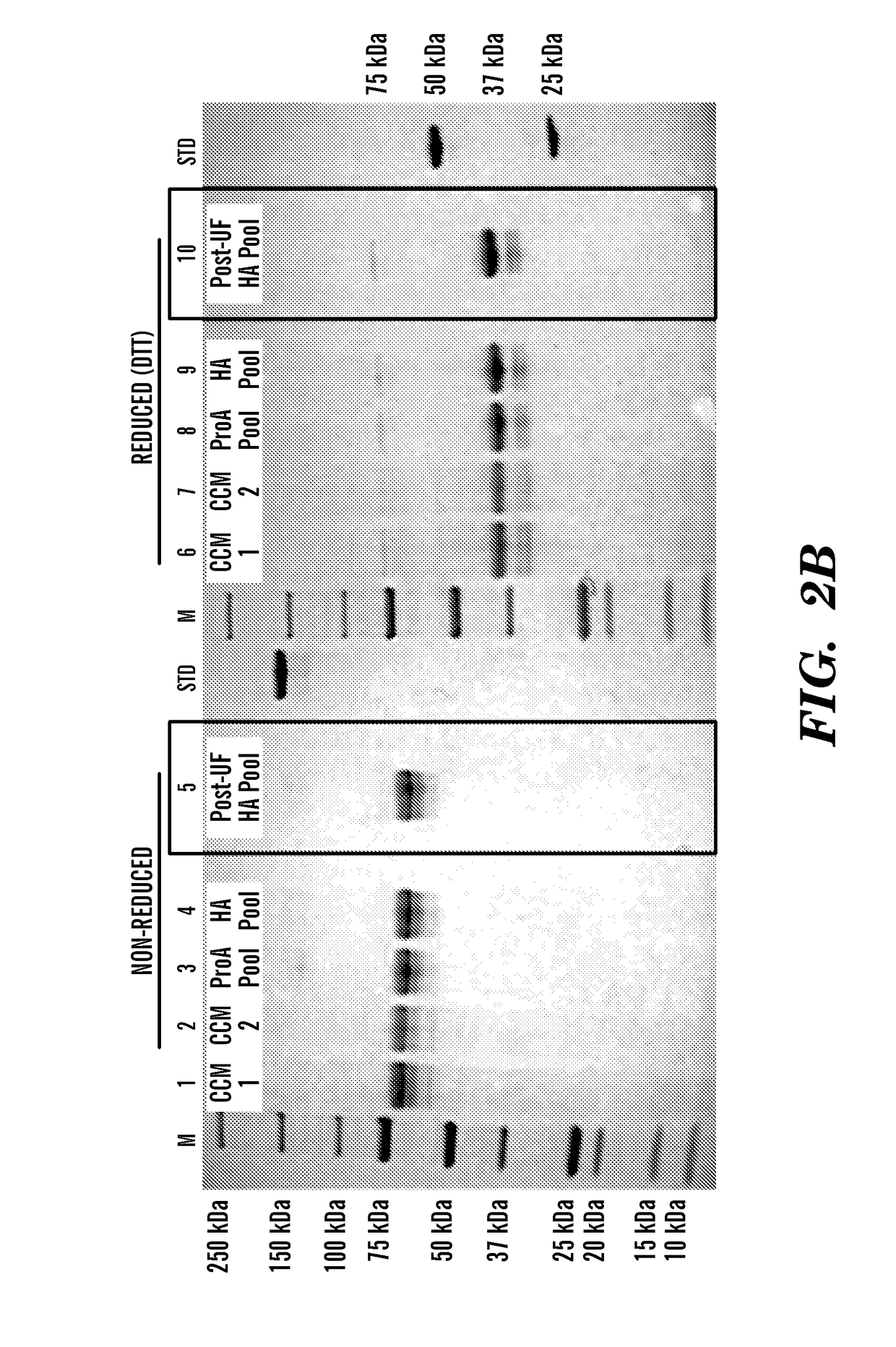Fgf23 fusion proteins
a technology of fusion proteins and fusion proteins, which is applied in the direction of peptides/protein ingredients, drug compositions, peptides, etc., can solve the problems of increased mortality, limited efficacy of such treatment, and increased serum calcium-
- Summary
- Abstract
- Description
- Claims
- Application Information
AI Technical Summary
Benefits of technology
Problems solved by technology
Method used
Image
Examples
example 1
Cloning and Expression of the Fc-FGF23 Fusion Protein
[0136]This example illustrates the generation and expression of the Fc-FGF23 fusion proteins described herein.
[0137]The human Fc-FGF23 fusion protein coding sequence was designed to contain a leader peptide, the hinge of a Human IgG1, a mutated effectorless variant CH2-CH3 region of a human IgG1, a single GGGGS linker, followed by the C-terminal 72 amino acids of human wild type FGF23 and is shown in Table 5. The predicted amino acid sequence of the pre-Fc-FGF23 fusion protein, and the mature secreted product are shown in Table 5 respectively.
[0138]As one of the desired properties of FGF23 c-tail Fc fusion proteins is to competitively inhibit the binding of FGF23 to the FGF23 receptor / α-klotho coreceptor complex, native Fc functions such as antibody-dependent cell-mediated cytotoxicity (ADCC) and complement-dependent cytotoxicity (CDC) are generally not preferred. Using a set of mutations as described by Winter et al. in US Patent...
example 2
C-terminal Fusion of FGF23 c-tail peptides to IgG1 Fc
[0141]Various PEG moieties conjugated to the FGF23 c-tail peptide on either the C-terminus or the N-terminus abolished or significantly reduced the peptide's inhibitory activity, making PEGylation a non-viable option. In contrast, fusion of the FGF23 c-tail peptide to an effectorless human Fc did not significantly impact the peptide's inhibitory activity. Interestingly, in an SPR-based competitive binding assay, the more untraditional C-terminal fusion showed greater inhibitory potency than the N-terminal fusion (FIG. 1). Additionally, while titers of the C-terminal and N-terminal Fc fusions were similar, purification yield was significantly higher for the C-terminal fusion.
example 3
Purification and Characterization of Fc-FGF23 c-tail Fusion Proteins
[0142]This example illustrates the purification and characterization of the fusion proteins obtained from the experiment described in Example 1 above.
[0143]Human FGF23-Fc was purified by Protein A affinity (MabSelect SuRe, GE Healthcare, Pittsburgh Pa., 17-5438) and ceramic hydroxyapatite (Macroprep CHT Type II, 40 μm, BioRad Hercules Calif., 157-4000) chromatography. Preliminary formulation studies were performed at 5 mg / ml and 50-65 mg / ml in HBS (20 mM Hepes, 150 mM NaCl, pH 7.5) and TMS buffer (1.2 mg / ml Tris, 40 mg / ml mannitol, 10 mg / ml sucrose, pH 7.5). The material was most stable in TMS buffer when concentrated to 50 mg / ml.
[0144]Murine FGF23-Fc was purified by Protein A affinity (MabSelect SuRe, GE Healthcare, 17-5438) and preparative SEC (Superdex 200pg, GE, 28-9893). The final pool was formulated at approximately 5 mg / ml in 20 mM Hepes, 150 mM NaCl, pH 7.5.
[0145]All lots of FGF23-Fc were characterized by UV...
PUM
| Property | Measurement | Unit |
|---|---|---|
| Fraction | aaaaa | aaaaa |
| Level | aaaaa | aaaaa |
Abstract
Description
Claims
Application Information
 Login to View More
Login to View More - R&D
- Intellectual Property
- Life Sciences
- Materials
- Tech Scout
- Unparalleled Data Quality
- Higher Quality Content
- 60% Fewer Hallucinations
Browse by: Latest US Patents, China's latest patents, Technical Efficacy Thesaurus, Application Domain, Technology Topic, Popular Technical Reports.
© 2025 PatSnap. All rights reserved.Legal|Privacy policy|Modern Slavery Act Transparency Statement|Sitemap|About US| Contact US: help@patsnap.com



